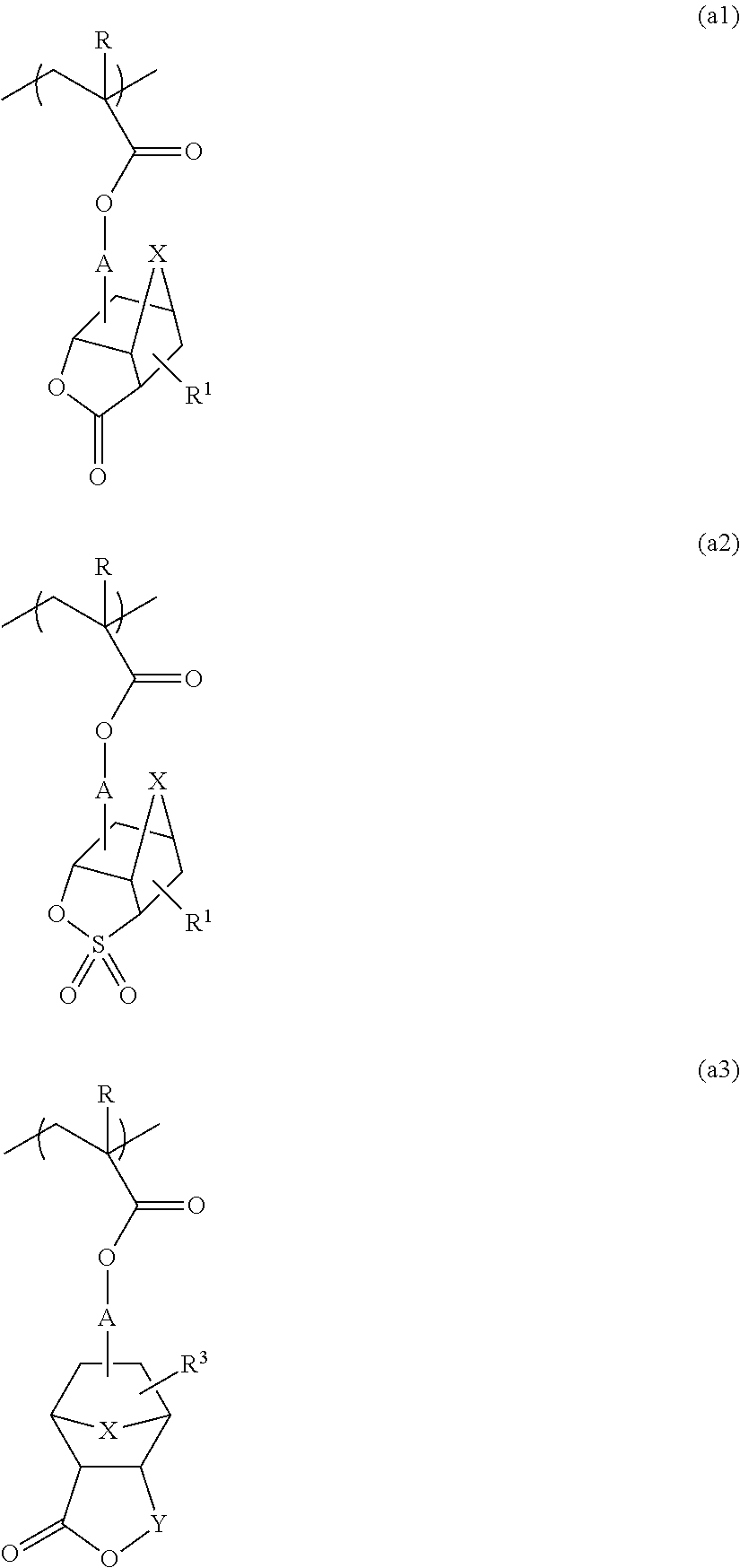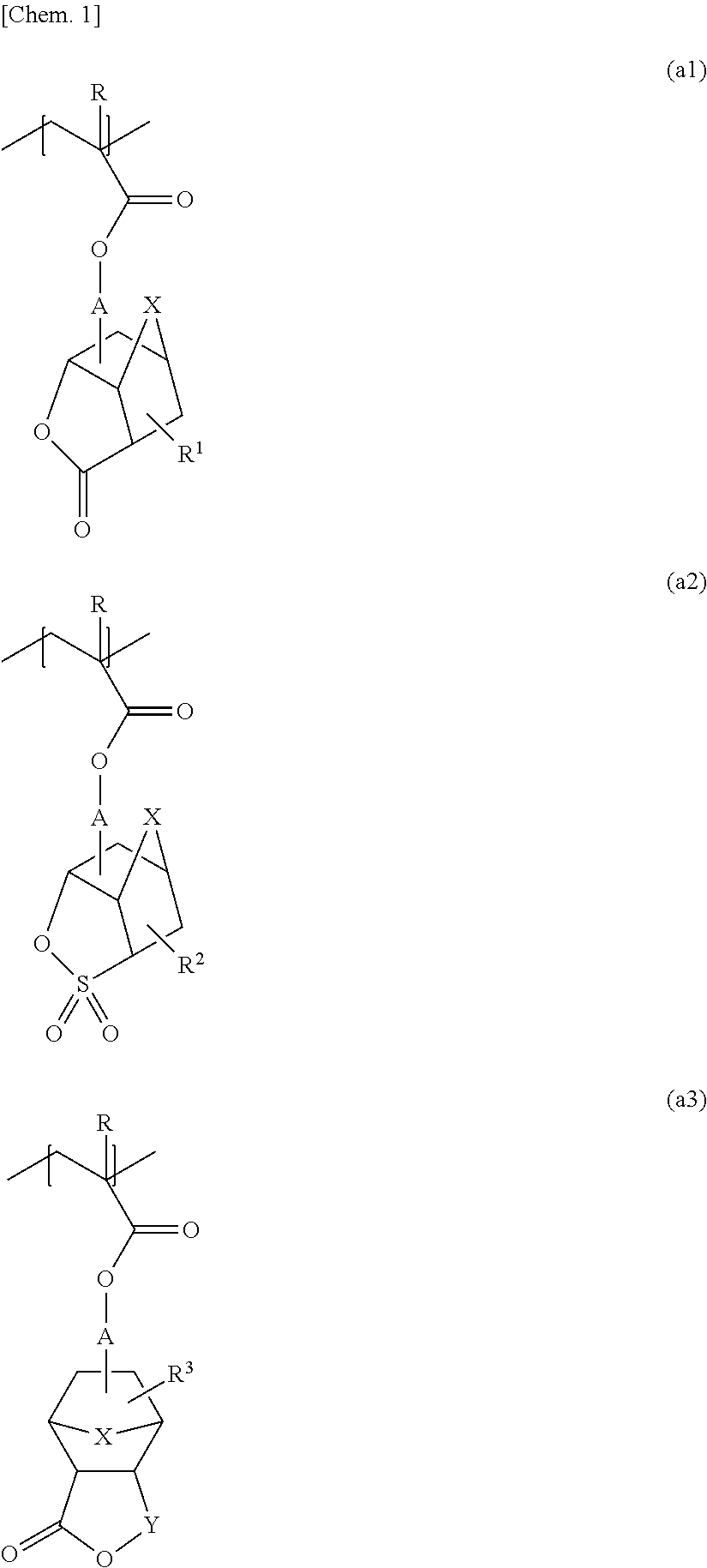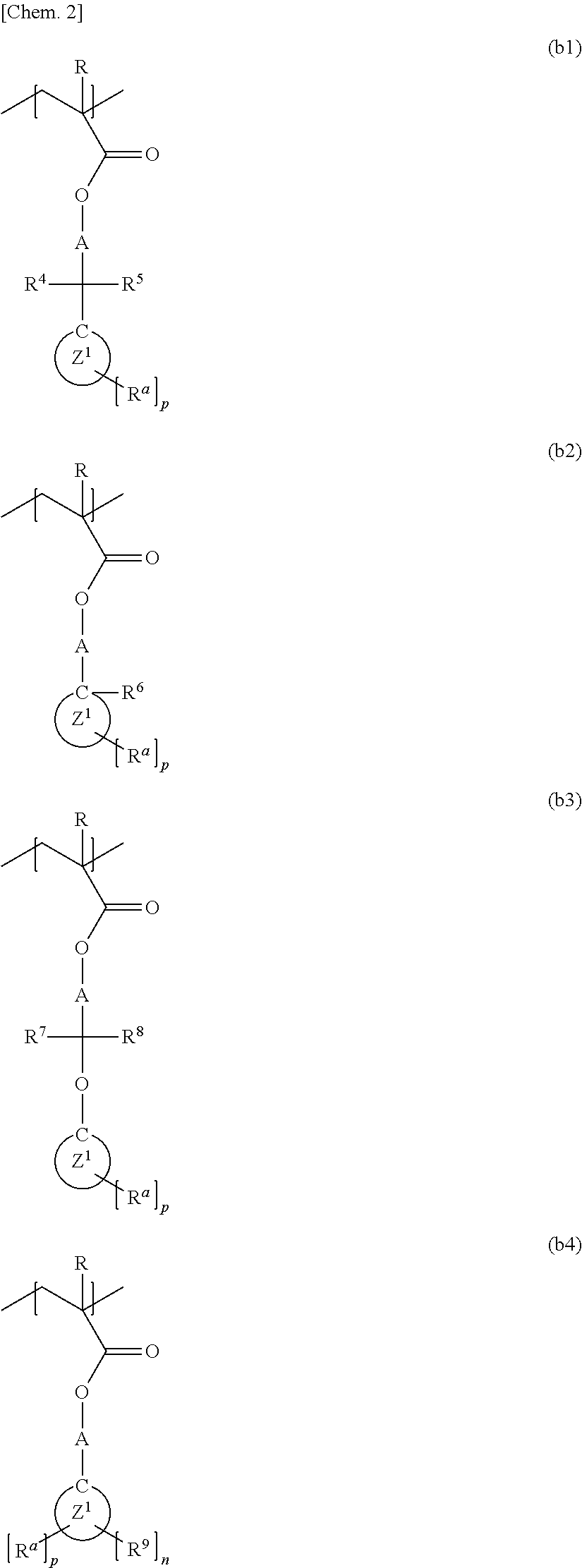Method for producing polymer compound, polymer compound, and photoresist resin composition
a resin composition and polymer compound technology, applied in the direction of photosensitive materials, instruments, photomechanical equipment, etc., can solve the problems of poor storage stability, poor storage stability, and inferior electrical properties of semiconductor devices, and achieve excellent storage stability, excellent storage stability, and low contents
- Summary
- Abstract
- Description
- Claims
- Application Information
AI Technical Summary
Benefits of technology
Problems solved by technology
Method used
Image
Examples
preparation example 1
Production of Resin Solution 1
[0081]In a nitrogen atmosphere, 595.0 g of cyclohexanone was placed in a round-bottomed flask equipped with a reflux condenser, a stirring bar, a three-way stopcock, and a thermometer. While being held at a temperature of 100° C. with stirring, the cyclohexanone was combined with a monomer solution added dropwise at a constant rate over 6 hours. The monomer solution was a mixture including 118.2 g (0.478 mol) of 1-cyano-5-methacryloyloxy-3-oxatricyclo[4.2.1.04,8]nonan-2-one, 56.5 g (0.239 mol) of 1-hydroxy-3-methacryloyloxyadamantane, 125.4 g (0.478 mol) of 1-(1-methacryloyloxy-1-methylethyl)adamantane, 7.50 g of dimethyl 2,2′-azobisisobutyrate (trade name V-601, supplied by Wako Pure Chemical Industries, Ltd.), and 1105.0 g of cyclohexanone. After the completion of dropwise addition, the resulting mixture was further stirred for 2 hours. After the completion of polymerization reaction, the reaction solution (reaction mixture) was filtered through a fil...
preparation example 2
Production of Resin Solution 2
[0083]The procedure in Example 1 was performed, except for using, as monomer components, 121.3 g (0.470 mol) of 5-methacryloyloxy-3-oxa-2-thiatricyclo[4.2.1.04,8]nonane-2,2-dione, 55.5 g (0.235 mol) of 1-hydroxy-3-methacryloyloxyadamantane, and 123.2 g (0.470 mol) of 1-(1-methacryloyloxy-1-methylethyl)adamantane. This yielded 257.2 g of a polymer compound including a monomer unit represented by Formula (2) below. The polymer compound had a weight-average molecular weight (Mw) of 8200 and a molecular weight distribution (Mw / Mn) of 1.91.
[0084]The prepared polymer compound was dissolved in PGMEA to a polymer concentration of 15% and yielded a resin solution 2.
preparation example 3
Production of Resin Solution 3
[0085]The procedure in Example 1 was performed, except for using, as monomer components, 133.6 g (0.438 mol) of 1-cyano-5-(2-methacryloyloxyacetoxy)-3-oxatricyclo[4.2.1.04,8]nonan-2-one, 51.7 g (0.219 mol) of 1-hydroxy-3-methacryloyloxyadamantane, and 114.7 g (0.438 mol) of 1-(1-methacryloyloxy-1-methylethyl)adamantane. This yielded 254.4 g of a polymer compound including a monomer unit represented by Formula (3) below. The polymer compound had a weight-average molecular weight (Mw) of 9000 and a molecular weight distribution (Mw / Mn) of 1.83.
[0086]The prepared polymer compound was dissolved in PGMEA to a polymer concentration of 15% and yielded a resin solution 3.
PUM
| Property | Measurement | Unit |
|---|---|---|
| molecular weight distribution | aaaaa | aaaaa |
| wavelength | aaaaa | aaaaa |
| wavelength | aaaaa | aaaaa |
Abstract
Description
Claims
Application Information
 Login to View More
Login to View More - R&D
- Intellectual Property
- Life Sciences
- Materials
- Tech Scout
- Unparalleled Data Quality
- Higher Quality Content
- 60% Fewer Hallucinations
Browse by: Latest US Patents, China's latest patents, Technical Efficacy Thesaurus, Application Domain, Technology Topic, Popular Technical Reports.
© 2025 PatSnap. All rights reserved.Legal|Privacy policy|Modern Slavery Act Transparency Statement|Sitemap|About US| Contact US: help@patsnap.com



